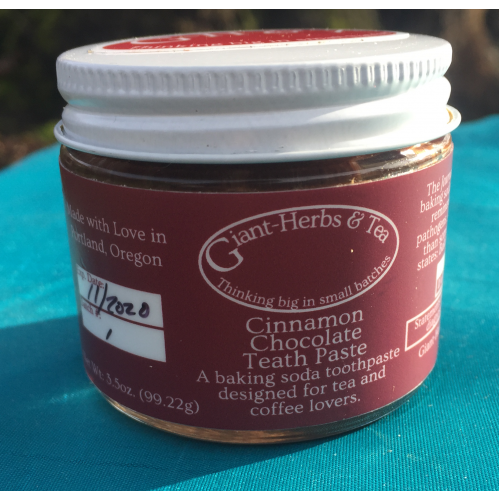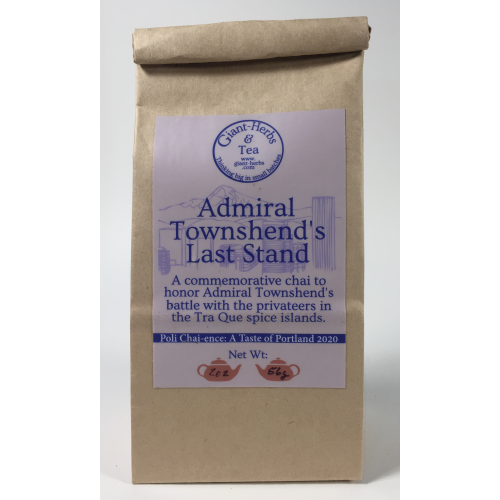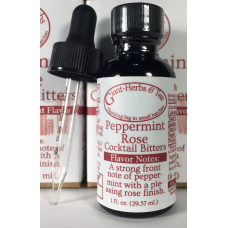

Giant Herbs & Tea is a brand of 12 LLC.
We make small batches of specialty toothpaste; handcrafted herbal tinctures to vitalize the mind, spirit, and body; fresh ground chai tea and loose leaf tea; as well as artisan cocktail bitters.
All of our product can be bought on our store at 12 LLC.
 |  |  |
| Teath Paste and Tinctures | Check out our Tea & Chai | Check out our Artisan Cocktail Bitters |
A bit about our Teath Paste? We wanted to create a product which filled a hole in the over-the-counter-industry for dental products. A number of people we know have long told us that when they have a problem with their teeth their sole solution is to be able to go to the dentist. This is actually an odd situation, medically speaking. When we have a headache, we can go to the health food store or supplement aisle and buy something to help alleviate our headache. When we have a stomachache, we can go to those same places and buy something which alleviates our stomachache. But why is it that when we have a toothache, we have to go to the dentist? Why is it that there are no common remedies for dental issues?
The Tea - in Teath Paste is not a typo, but explains two things: First, this is a toothpaste for people who love to drink their coffee and tea, but suffer the discoloration and staining of their teeth due to their habits. As JADA says: "In spite of its low abrasivity, [toothpastes] containing baking soda are more effective in stain removal and whitening than some non-baking soda [toothpastes]." The second reason: Have you ever wondered why it is called toothpaste? Do we just brush one tooth with our toothbrush? Shouldn't our toothbrush really be called a teethbrush, and our toothpaste called teethpaste? Obviously, the folks who originally branded this product didn't like the grammar of teeth.
Now, a few more ideas: According to the JADA reference above, baking soda is bacteriacidal, this means that it kills the bacteria in your mouth. Just this year, a number of studies have been released which have investigated the possibility that dementia and the bacteria in our mouths are related. You can read these abstracts here, here, and here. If this research is true, then a bactericidal effect to a toothpaste is even more than just about killing the bacteria in our mouths, but in the long run might help us to maintain healthy cognitive function over our lives.
Lastly, JADA in the same reference above, states "baking soda is anticariogenic by facilitating remineralization of incipient carious lesions," or in plain terms that baking soda remineralizes the cavities in the teeth. | ||
Someone asked us the other day if we are going to put our products in a tube. The short answer is: "Nope." The long answer is that the glass and metal which are part of our jars, and the glass for our tincture bottles is very easy to recycle. Think about how many tubes of toothpaste you have used in your life. Sure, it is convenient, but where does that toothpaste tube go when you are done with it? In the garbage. How many tubes of toothpaste do we each use in our life? How many empty tubes of toothpaste are in a landfill somewhere? Probably more than 1,962,000,000 per year. That would be the populace of the United States (327,000,000 people in 2018) times 6 -- if it takes 2 months or less to use a tube of toothpaste. That's a lot of empty tubes of toothpaste sitting out there in the garbage. As a brand of 12 LLC, we want to do our part to eliminate as much of the product we produce from the waste stream. It is the ethical and responsible thing to do for all of the generations which come after us. | ||